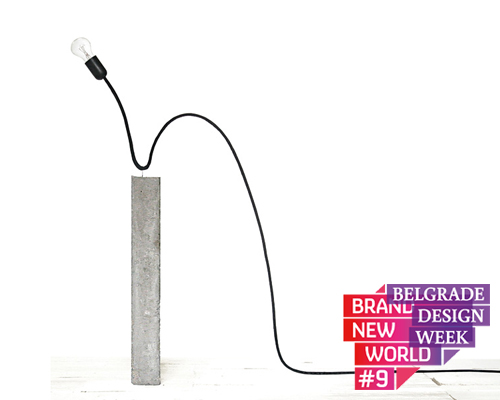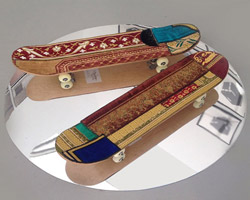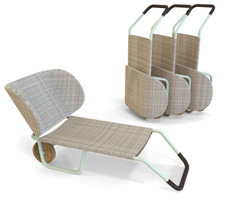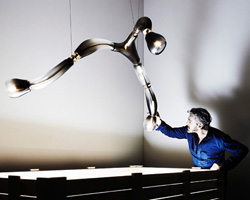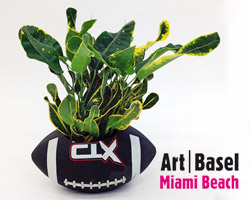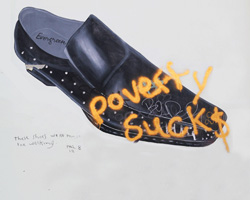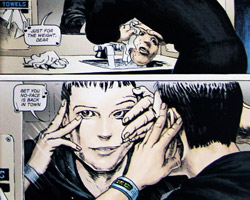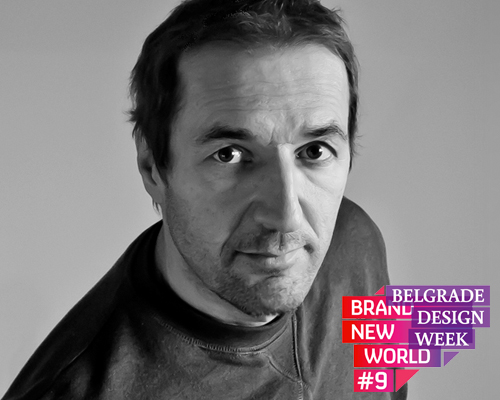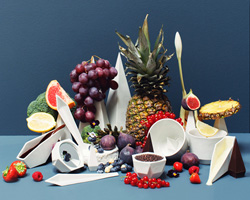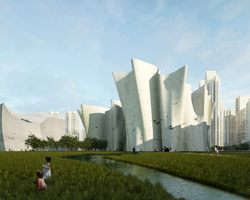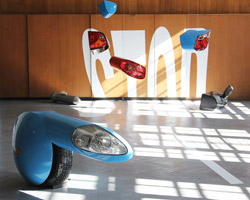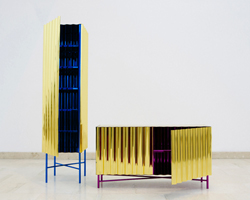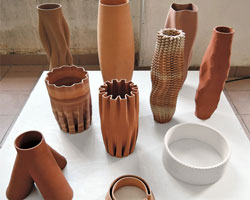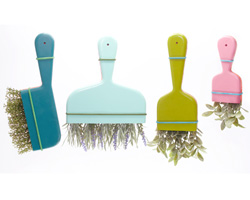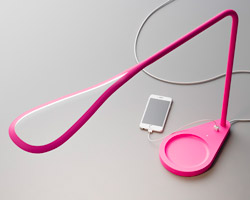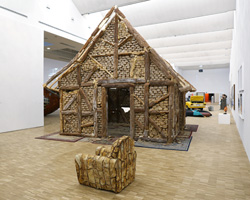tom strala
comic 1 | lamp, 2009
concrete, epoxy
H 93.5 x W 65 x L 5.5 cm
limited edition of 50
‘the question is not if something is a materialized idea, the question is if it’s an intelligent materialization or not’. – tom strala
invited by jovan and vesna jelovac to belgrade design week 2014, swiss architect tom strala presented his portfolio of design work of quintessential craftsmanship and his passion for awakening thoughts. through an introspective lecture, he motivated the audience to avoid automatism and its resulting predictability, and instead challenge it in a way that brings forth and reveals an unexpected beauty. we bring you a summary of his enthusiasm for research.

tom strala
comic 1 | lamp, 2009
concrete, epoxy
H 93.5 x W 65 x L 5.5 cm
limited edition of 50
how can we soak matter with spirit?
how is it that living like bees in a honeycomb becomes a manifesto for modern / contemporary architecture?
something that is typically perceived as plump and poor, suddenly is admired for its formal qualities and considered beautiful? that is really absurd. if an object is beautiful, then it was already beautiful before. the object will not catch the ‘idea’ once it is there, it will not turn into something new. this is the reason why objects must have something more than just physical matter. something that explains to us humans its intrinsic beauty. that we can see something we didn’t see before. that the object is soaked with an aura which allows a plump and poor building to become a living ideal.
we think that matter is so important because it does not change with time. the point is, we should not take the matter so serious simply because it becomes nothing more than what it is. we should take people who are present enough in the moment to catch a new idea seriously. it’s our spirit that makes the matter to what it is, and not the reverse. we can clearly see that we have big problems when we try to turn dead matter into something that is alive. we can probably make a robot, but frankenstein’s patchwork of dead body parts remains a fantasy.
a lot of people have the idea that an artist just has to let his work flow. that he brings something out of himself because he is a genius, or something like that. of course we can be the source of creation, but we have to reflect on what we have produced.
for me it is very important to go into the matter. that means that we are willing to understand and that we try to ask the right questions. that way, we come to a point of no return. and exactly this no return is interesting. because there we have to break, to open ourselves and to discard outlived patterns. only in this way something new can be born. if we had known the outcome from the beginning, it wouldn’t be creative or innovative. this is the force of evolution — to define and explore borders in a new way, and to bypass them.
there are different ways to move beyond these borders. we can form not only material, but we can also form the world through the way we think and the way we are speaking. that means that thinking or speaking is a sculptural process too. it helps to see our thoughts and language as something formable when we want to kill patterns, so that we can form letters to a poem. but with the same letters we can also develop philosophy, society systems or build a castle in the air.
what words are for a poet, material is for a designer.
words have a specific meaning and are the transmitter of a message. it’s exactly the same with material. it doesn’t matter what we are producing – the form always a message. if you take an existing plastic chair and decide to make it in wood instead, it still carries a part of its original message or meaning. that’s the reason why art is not only a process where something is coming out like barf, because what‘s coming out can be something wrong. that’s why the question is not if something is a materialized idea, the question should be: is it an intelligent materialization or not.
material is not, material arises. that’s really important because that means that material was once something else and already walked through a transformation. what we designers do that is really interesting, is a kind of mirroring of this transformation process. we create new objects with the material given by nature, so that the original material – let’s call it pixie dust – gets a new dimension similar to an evolution.
material needs a specific process so that it can arise from pixie dust. if we analyze this process and other natural processes, we can learn something where material is starting to get malleable and understand how we can model it. exactly at this point material gets interesting for a designer. that means at this point we can do something with material. I like this very much. as I mentioned before, us designers come very often to a point of no return. and at this point you have to break, to open and to dismantle yourself — to come to something new. at the point where material can’t go any further, it becomes malleable. although material is a dead matter it seems that it follows the same principles… as we humans do too… it has to move. so it‘s not only the artist who forms material, it’s also the material which forces the artist. materials can also decide how our artistic approach is. it gives us guidelines.
before I start creating a new object it starts with a need I want to follow and a vague idea of how I can follow this need.
of course we can follow ideas, but we can only materialize them when they are already inherently here so that we can discover them.
because beautiful buildings [like the ones of carlo scarpa, lina bo bardi or geoffrey bawa] are possible, we are also able to discover them. more interesting than beautiful buildings, is the possibility to move patterns to the point where the thought is no longer black or white. for a fraction of a moment we perceive this immediacy which has no meaning or given value yet. this is more sensual than anything else on the earth.

tom strala
comic 1 | lamp, 2009
concrete, epoxy
H 93.5 x W 65 x L 5.5 cm
limited edition of 50

tom strala
calmares 1 | lamp ceiling, 2010
white coated aluminium
H 80 x W 150 x L 150 cm
limited edition of 15

tom strala
calmares 1 | lamp ceiling, 2010
white coated aluminium
H 80 x W 150 x L 150 cm
limited edition of 15
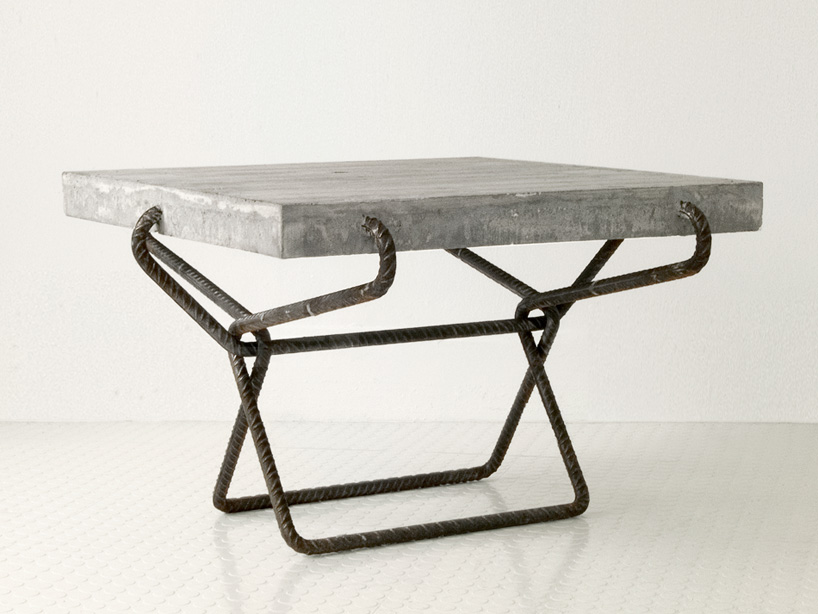
tom strala
bartok | table, 2007
concrete, armouring steel
H 45 x W 56.5 x L 56.5 cm
the ‘bartok’ table showcases the things we typically wish to cover and make invisible. in this design, iron rods which are typically used internally in construction for structural purposes, are given new meaning. in this way, the table offers iron as something that is appreciated for its aesthetics, altering our perception of what is considered beautiful.

tom strala
kalahock | chair stool, 2005
black coated aluminium, leather
H 49.5 x W 71 x L 50.5 cm
limited edition of 50

tom strala
kalahario | chair, 2005
black coated aluminium, leather
H 95 x W 71 x L 77.5 cm
limited edition of 50

tom strala
kalahari | chair, 2005
black coated steel, gas spring, leather
H 54.5 x W 64 x L 91 cm
limited edition of 1

tom strala
seefelder | chair, 2011-2013 (white)
kult object
rattan, chrome steel
H 78 x W 62 x L 66 cm
taking approximately three years to bring to fruition, the ‘seefelder’ series of seating objects explores the possibilities of rattan as a technical and aesthetic material, in which strala desired to create something of a relaxed modernity — defined forms, and easy to use. with its unpretentious nature and inherent warmth of the employed rattan, ‘seefelder’ celebrates the poetry of daily life, while conveying the relaxed feeling of a holiday cottage. it is a manifest against the sterile and arduous design that has forgotten its beauty and lust of life. each piece of the ‘seefelder’ family is made in a small manufactory. the braided natural rattan is available in three different colors of basket top: white, red or transparent varnish. te metal frame is available in painted black green or brushed chrome.

tom strala
seefelder | chair , 2011-2013 (white detail)
kult object
rattan, chrome steel
H 78 x W 62 x L 66 cm
during art basel miami beach | design miami/ 2014, strala’s work has been presented in collaboration with his U.S. gallery the NWBLK and swiss bathroom manufacturer LAUFEN.
alongside the presentation of strala’s designs, the saphirkeramik™ installation by konstantin grcic and toan nguyen (originally presented at milan and belgrade design week earlier this year) has been shown at miami ironside, in the new US showroom of LAUFEN. on december 3rd, 2014 during the ‘campus collective night’, an in-depth talk took place with tom strala, moderated by jovan jelovac, founder of belgrade design week, and marc viardot, director of marketing and products at LAUFEN, around the theme of ‘materialized intelligence’.

tom strala
seefelder | chair , 2011-2013
kult object
rattan, chromesteel
H 78 x W 62 x L 66 cm
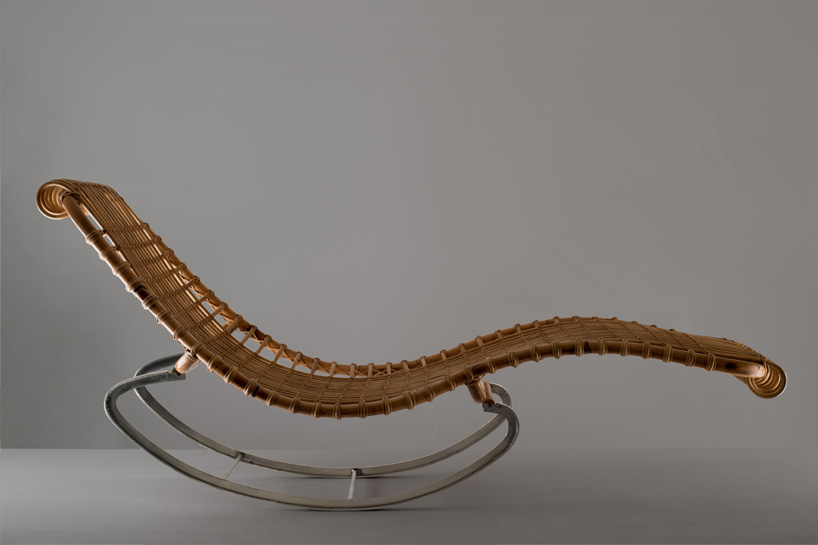
tom strala
lazy seefelder | chair long, 2013
kult object
rattan, chrome steel
H 740 x B650 x L 1730 cm

tom strala
lazy seefelder | chair long, 2013 (detail)
kult object
rattan, chrome steel
H 740 x B650 x L 1730 cm

tom strala
lazy seefelder | chair long, 2013 (white)
kult object
rattan, chrome steel
H 740 x B650 x L 1730 cm

tom strala
lazy seefelder | chair long, 2013 (white detail)
kult object
rattan, chrome steel
H 740 x B650 x L 1730 cm

tom strala
lazy seefelder | chair long, 2013 (detail)
kult object
rattan, chrome steel
H 740 x B650 x L 1730 cm

tom strala
rocking seefelder | rocking chair, 2011-2013
kult object
rattan, chrome steel
H 78 x W 62 x L 80 cm
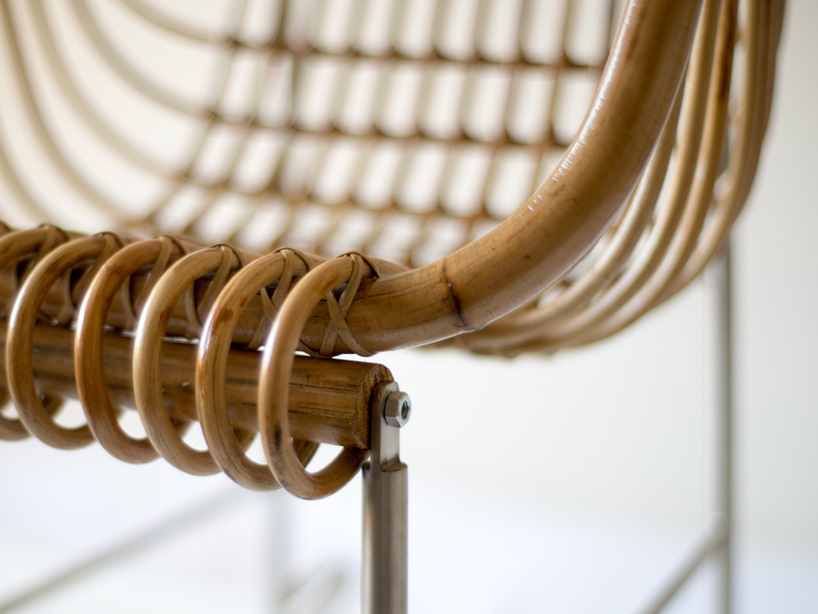
tom strala
rocking seefelder | rocking chair, 2011-2013 (detail)
kult object
rattan, chrome steel
H 78 x W 62 x L 80 cm
tom strala:
studied architecture at the ETH zurich and in 2001 he obtained this masters of science ETH in architecture (MSC ETH arch) with distinction. from the early stages, strala has been working under his own studio name; and since 2002 has been running his own showroom based in zurich’s well-known seefeld.
the recent years have been followed by several exhibitions at renowned museums and galleries and expanded by lectureships and leading workshops at the ETH zurich as well as at the california college of the arts (CCA San Francisco). tom strala’s growing reputation has led him to participate and chair in international judging panels in the fields of art, design and architecture. strala has realized projects for star architects as zaha hadid, sir norman foster, mario botta, david chipperfield and herzog de meuron.

tom strala
rocking seefelder | rocking chair, 2011-2013 (detail)
kult object
rattan, chrome steel
H 78 x W 62 x L 80 cm
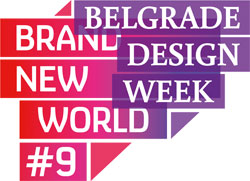
about belgrade design week:
2014 marks the ninth edition of belgrade design week, an annual, internationally-renowned festival for creative industries and modern business in serbia and throughout the south east european area. since 2005, founder jovan jelovac has successfully forged multicultural connections between artists, designers and entrepreneurs from the region with the greater global design scene. the initiative serves as a platform for creatives to engage in the exchange of ideas across a range of disciplines — advertising, architecture, arts management, communications, design, fashion, marketing, new media and publishing — delivering approximately 30 international speakers who share their perspectives and personal developments in their respective fields.
this year’s conference program ‘brand new world’ sets opens up discussion regarding the creation of new values in today’s fast changing world. on the occasion of this edition, president of the republic of serbia, tomislav nikolic opened the initiative, stressing the importance of the creative industries for the continued development of the country’s economy. local designers stand side by side with some the world’s greatest talents in a rare opportunity to bring the world to belgrade and to present belgrade to the world. find out more about the program, selection of keynote speakers and exhibition sites on designboom, here.
update: tom strala presents his work in the ‘brand new world’ exhibition during milan design week 2015 (via antonio zarotto, 1). sponsored and organized in partnership with LAUFEN and architonic, brand new world brings together eight international studios who ‘epitomize the concept of designers, makers, entrepreneurs – defining a truly brand new world of design’.
ART BASEL MIAMI 2014 (34)
BELGRADE DESIGN WEEK 2014 (8)
MILAN DESIGN WEEK 2015 (164)
PRODUCT LIBRARY
a diverse digital database that acts as a valuable guide in gaining insight and information about a product directly from the manufacturer, and serves as a rich reference point in developing a project or scheme.
